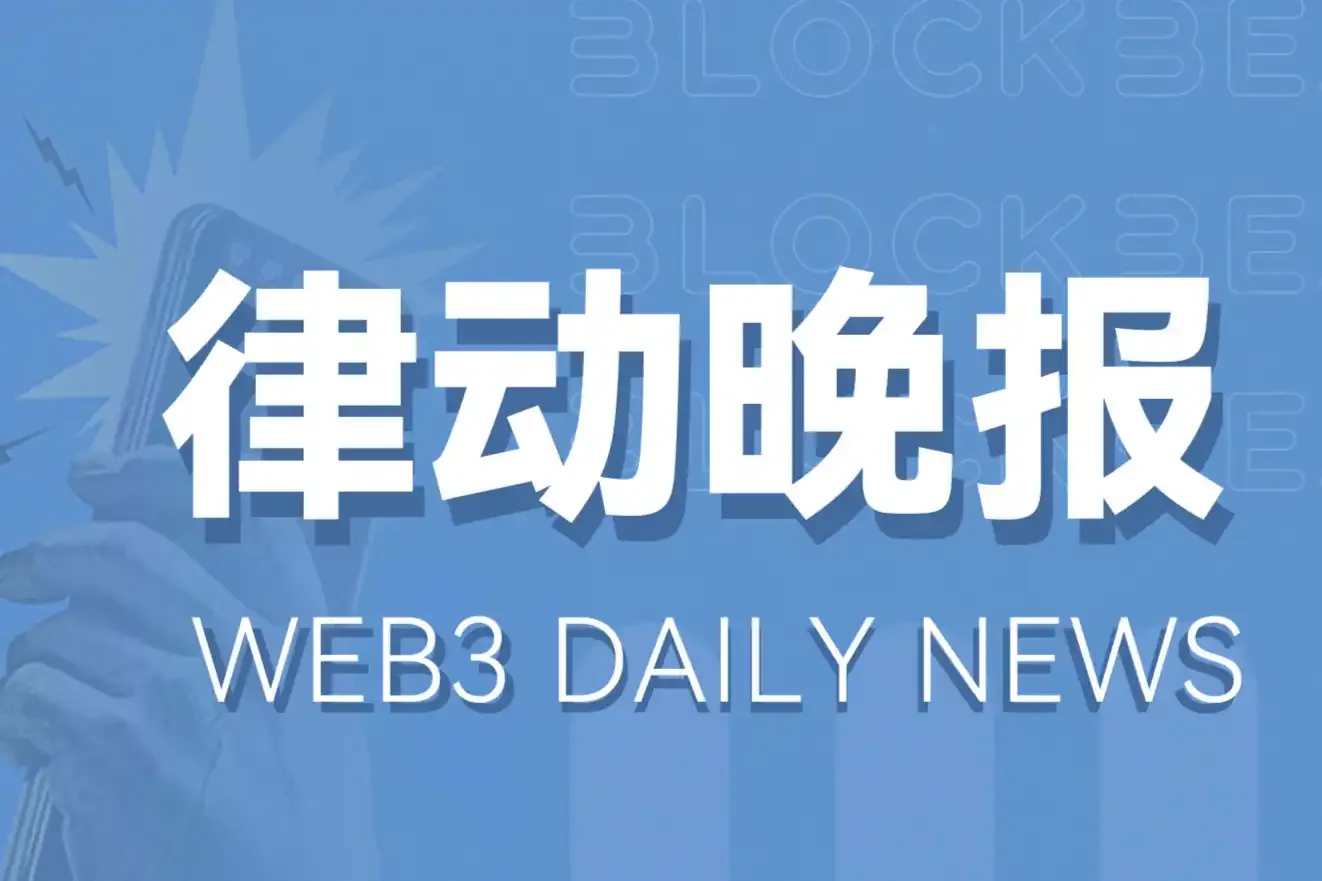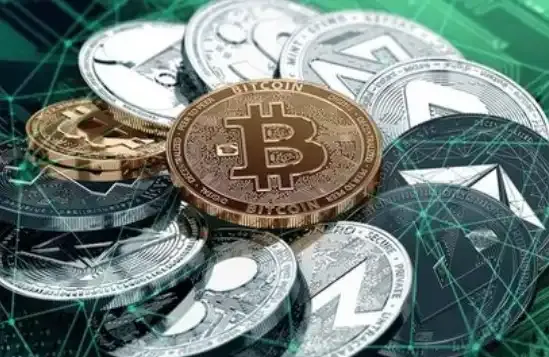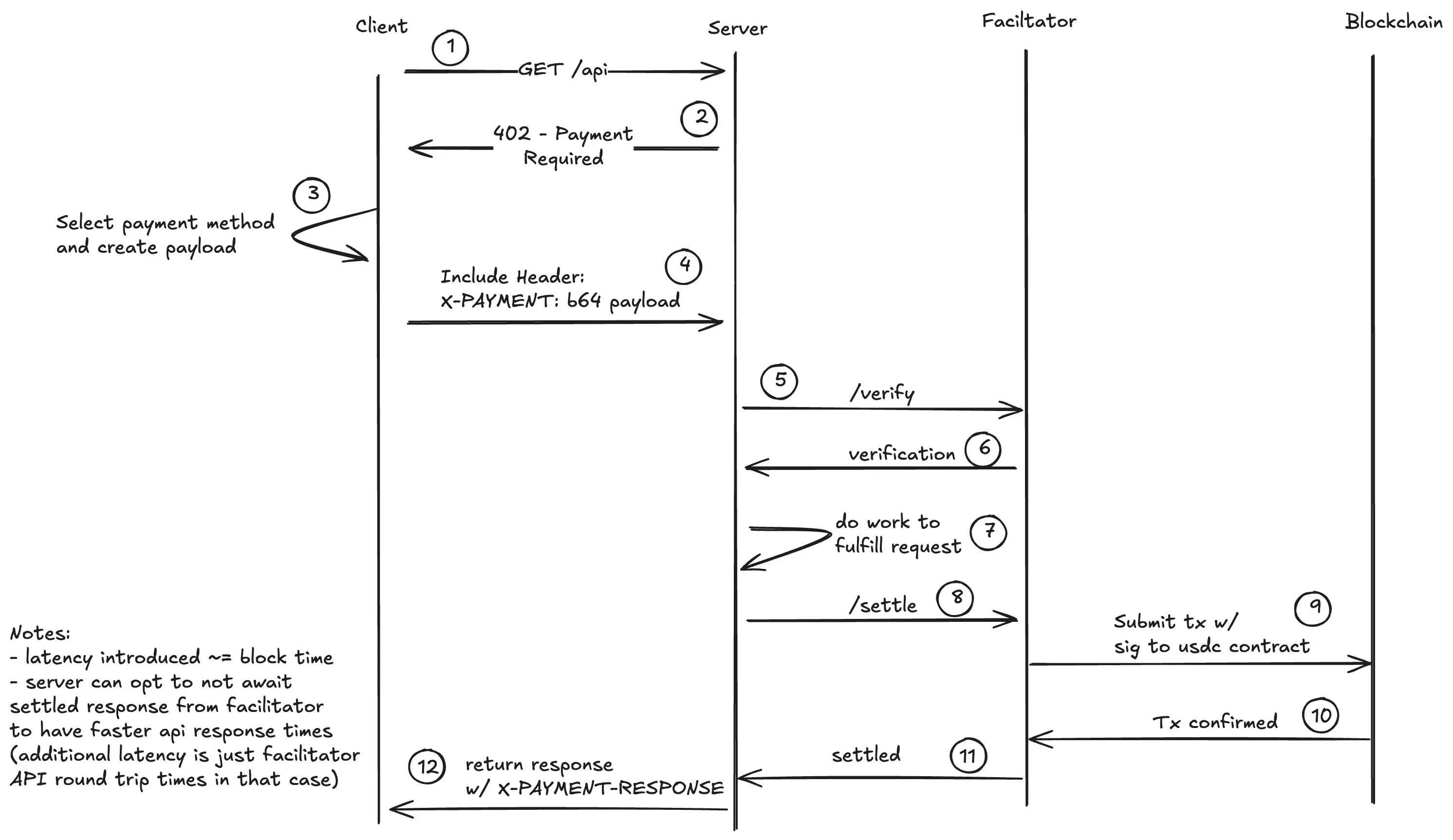Original Title: Stablecoins, Narrow Banking, and the Liquidity Blackhole
Original Author: @0x_Arcana
Translated by: Peggy, BlockBeats
Editor's Note: As the global financial system gradually digitizes, stablecoins are quietly becoming a force that cannot be ignored. They do not belong to banks, money market funds, or traditional payment systems, yet they are reshaping the liquidity pathways of the dollar, challenging the transmission mechanisms of monetary policy, and sparking a deep discussion about "financial order."
This article begins with the historical evolution of "narrow banking" and delves into how stablecoins replicate this model on-chain, influencing the U.S. Treasury market and global financial liquidity through the "liquidity blackhole effect." In a context where policy regulation is not yet fully clarified, the non-cyclical expansion, systemic risks, and macro impacts of stablecoins are becoming new topics that the financial community cannot avoid.
The following is the original text:
Stablecoins Reviving "Narrow Banking"
For over a century, monetary reformers have proposed various concepts of "narrow banking": financial institutions that issue currency but do not provide credit. From the Chicago Plan of the 1930s to the modern proposal of The Narrow Bank (TNB), the core idea is to prevent bank runs and systemic risks by requiring currency issuers to hold only safe, highly liquid assets (such as government bonds).
However, regulators have consistently rejected the implementation of narrow banking.
Why? Because, theoretically safe, narrow banks would disrupt the core of the modern banking system—the credit creation mechanism. They would siphon deposits away from commercial banks, hoarding risk-free collateral, breaking the link between short-term liabilities and productive loans.
Ironically, the crypto industry has now "revived" the narrow banking model in the form of fiat-backed stablecoins. The behavior of stablecoins is almost entirely consistent with the liabilities of narrow banks: they are fully collateralized, redeemable on demand, and primarily backed by U.S. Treasury securities.
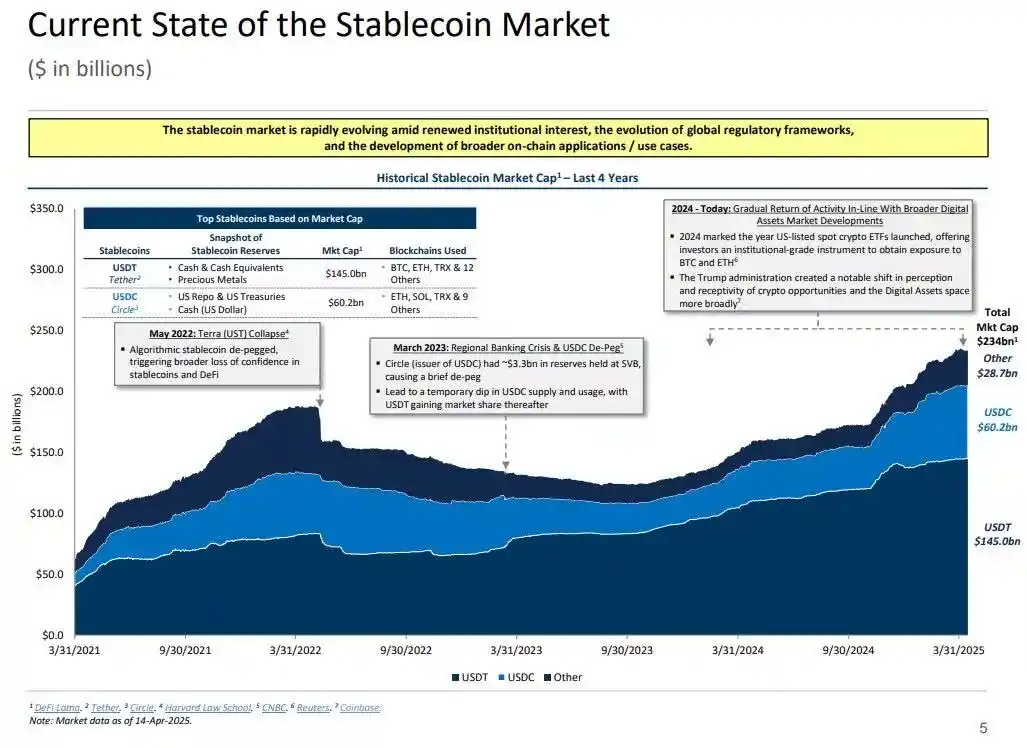
After a series of bank failures during the Great Depression, economists from the Chicago School proposed a concept: to completely separate money creation from credit risk. According to the 1933 "Chicago Plan," banks must hold 100% reserves against demand deposits, and loans can only come from time deposits or equity, not from deposits used for payments.
The original intention of this concept was to eliminate bank runs and reduce the instability of the financial system. Because if banks cannot lend from deposits, they will not fail due to liquidity mismatches.
In recent years, this idea has re-emerged in the form of "narrow banking." Narrow banks accept deposits but only invest in safe, short-term government securities, such as Treasury bills or Federal Reserve reserves. A recent example is The Narrow Bank (TNB), which applied to access the Federal Reserve's interest on excess reserves (IOER) in 2018 but was denied. The Federal Reserve was concerned that TNB would become a risk-free, high-yield alternative for deposits, thereby "undermining the transmission mechanism of monetary policy."
What regulators are truly worried about is: if narrow banks succeed, they could weaken the commercial banking system, siphoning deposits from traditional banks and hoarding safe collateral. Essentially, narrow banks create instruments similar to money but do not support the credit intermediation function.
My personal "conspiracy theory" view is that the modern banking system is essentially an illusion of leverage, operating under the premise that no one tries to "find an exit." Narrow banks threaten this model. But upon closer examination, this is not so conspiratorial—it merely reveals the fragility of the existing system.
Central banks do not directly print money but instead regulate indirectly through commercial banks: encouraging or restricting lending, providing support during crises, and maintaining the liquidity of sovereign debt by injecting reserves. In exchange, commercial banks receive zero-cost liquidity, regulatory leniency, and implicit rescue promises during crises. In this structure, traditional commercial banks are not neutral market participants but tools of state intervention in the economy.
Now, imagine a bank saying: "We do not want leverage; we just want to provide users with safe currency backed 1:1 by Treasury securities or Federal Reserve reserves." This would render the existing fractional reserve banking model obsolete, directly threatening the current system.
The Federal Reserve's rejection of TNB's main account application is a manifestation of this threat. The issue is not that TNB would fail, but that it might actually succeed. If people can obtain a currency that is always liquid, has no credit risk, and can earn interest, why would they still deposit money in traditional banks?
This is where stablecoins come into play.
Fiat-backed stablecoins almost replicate the narrow banking model: issuing digital liabilities redeemable for dollars and supporting these liabilities with safe, liquid off-chain reserves on a 1:1 basis. Like narrow banks, stablecoin issuers do not use reserve funds for lending. While issuers like Tether currently do not pay interest to users, this is beyond the scope of this article. This article focuses on the role of stablecoins in the modern monetary structure.
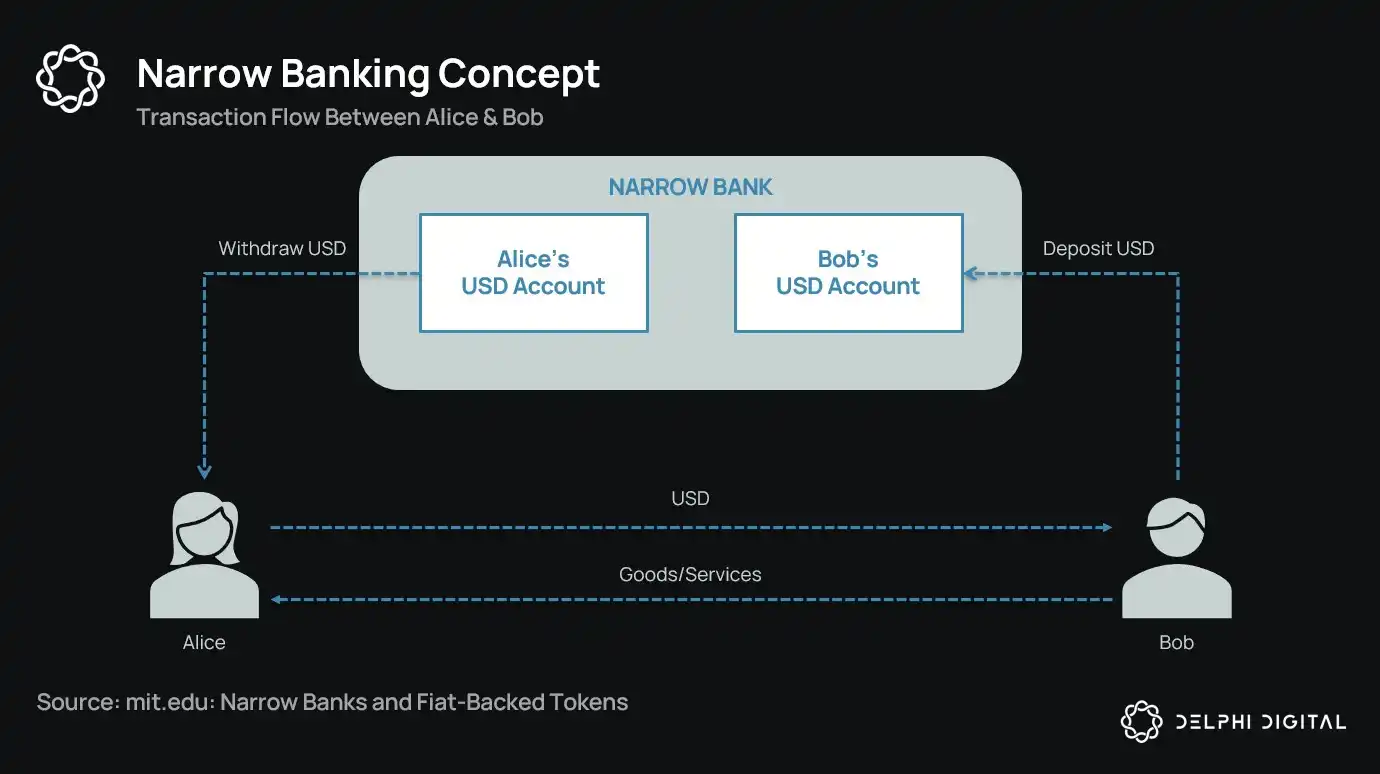
Assets are risk-free, liabilities are redeemable on demand, possessing the attributes of par value currency; there is no credit creation, no maturity mismatch, and no leverage.
And although narrow banking was "suffocated" by regulators in its infancy, stablecoins have not faced similar restrictions. Many stablecoin issuers operate outside the traditional banking system, especially in high-inflation countries and emerging markets, where demand for stablecoins continues to grow—regions that often struggle to access dollar banking services.
From this perspective, stablecoins have evolved into a "digitally native Eurodollar," circulating outside the U.S. banking system.
But this also raises a key question: what impact will it have on systemic liquidity when stablecoins absorb a sufficient amount of U.S. Treasury securities?
Liquidity Blackhole Thesis
As the scale of stablecoins expands, they increasingly resemble global liquidity "islands": absorbing dollar inflows while locking safe collateral in a closed loop that cannot re-enter the traditional financial cycle.
This could lead to a "liquidity blackhole" in the U.S. Treasury market—where a large amount of Treasury securities is absorbed by the stablecoin system but cannot circulate in the traditional interbank market, thereby affecting the overall liquidity supply of the financial system.
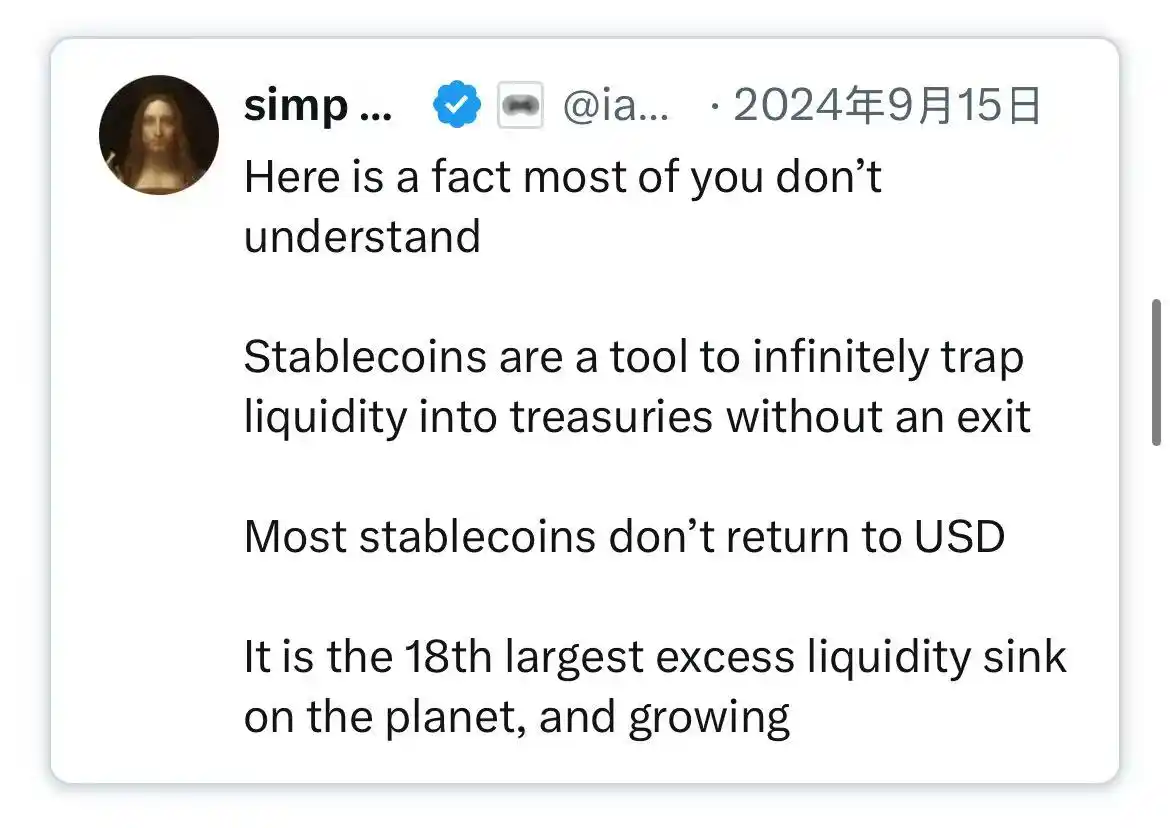
Stablecoin issuers are long-term net buyers of short-term U.S. Treasury securities. For every dollar of stablecoin issued, there must be an equal value of assets backing it on the balance sheet—usually Treasury bills or reverse repo positions. But unlike traditional banks, stablecoin issuers do not sell these Treasury securities for lending or shift to risk assets.
As long as stablecoins remain in circulation, their reserves must be continuously held. Redemptions only occur when users exit the stablecoin system, which is very rare, as on-chain users typically only exchange between different tokens or use stablecoins as a long-term cash equivalent.
This makes stablecoin issuers a one-way liquidity "blackhole": they absorb Treasury securities but rarely release them. When these Treasury securities are locked in custodial reserve accounts, they exit the traditional collateral cycle—unable to be re-collateralized or used in the repo market, effectively removed from the currency circulation system.
This creates a "sterilization effect." Just as the Federal Reserve's quantitative tightening (QT) tightens liquidity by removing high-quality collateral, stablecoins do the same—without any policy coordination or macroeconomic objectives.
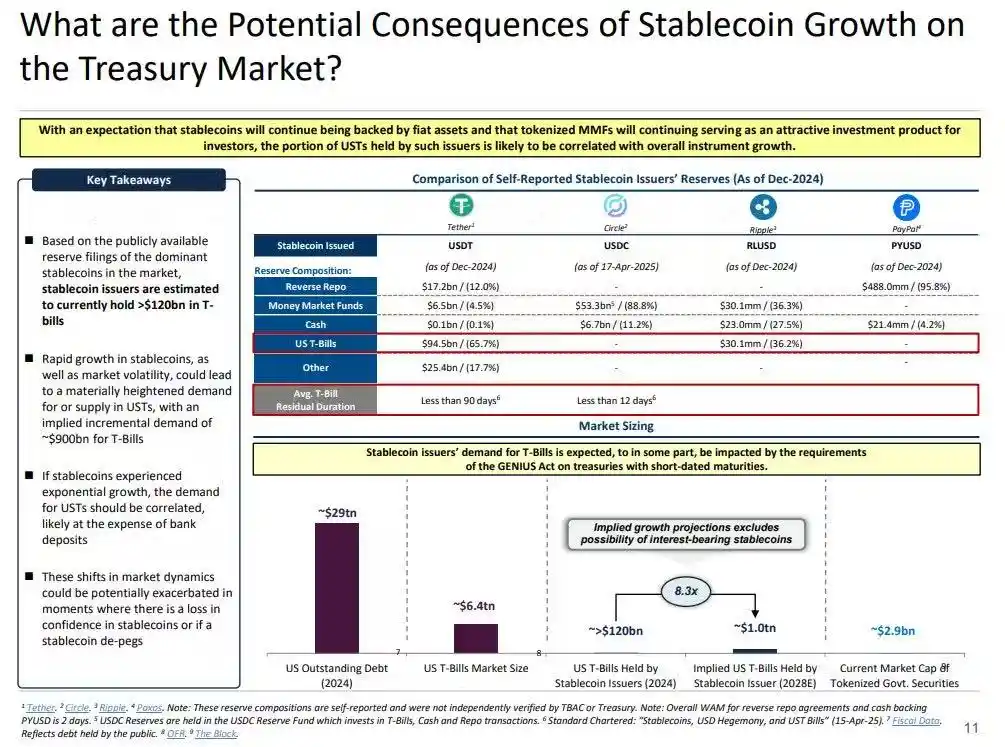
More potentially destructive is the concept of "shadow quantitative tightening" (Shadow QT) and the ongoing feedback loop. It is non-cyclical, not adjusted according to macroeconomic conditions, but expands as demand for stablecoins grows. Moreover, since many stablecoin reserves are held in offshore jurisdictions with lower transparency outside the U.S., the visibility and coordination of regulation become more challenging.
Worse still, this mechanism could become pro-cyclical in certain situations. When market risk aversion rises, demand for on-chain dollars often increases, driving up stablecoin issuance and further siphoning more U.S. Treasury securities from the market—precisely when the market needs liquidity the most, the blackhole effect intensifies.
Although the scale of stablecoins is still far smaller than the Federal Reserve's quantitative tightening (QT), their mechanisms are highly similar, and the macro impacts are akin: a reduction in the amount of Treasury securities circulating in the market; tightening liquidity; and marginal upward pressure on interest rates.
Moreover, this growth trend has not slowed down; rather, it has significantly accelerated in recent years.
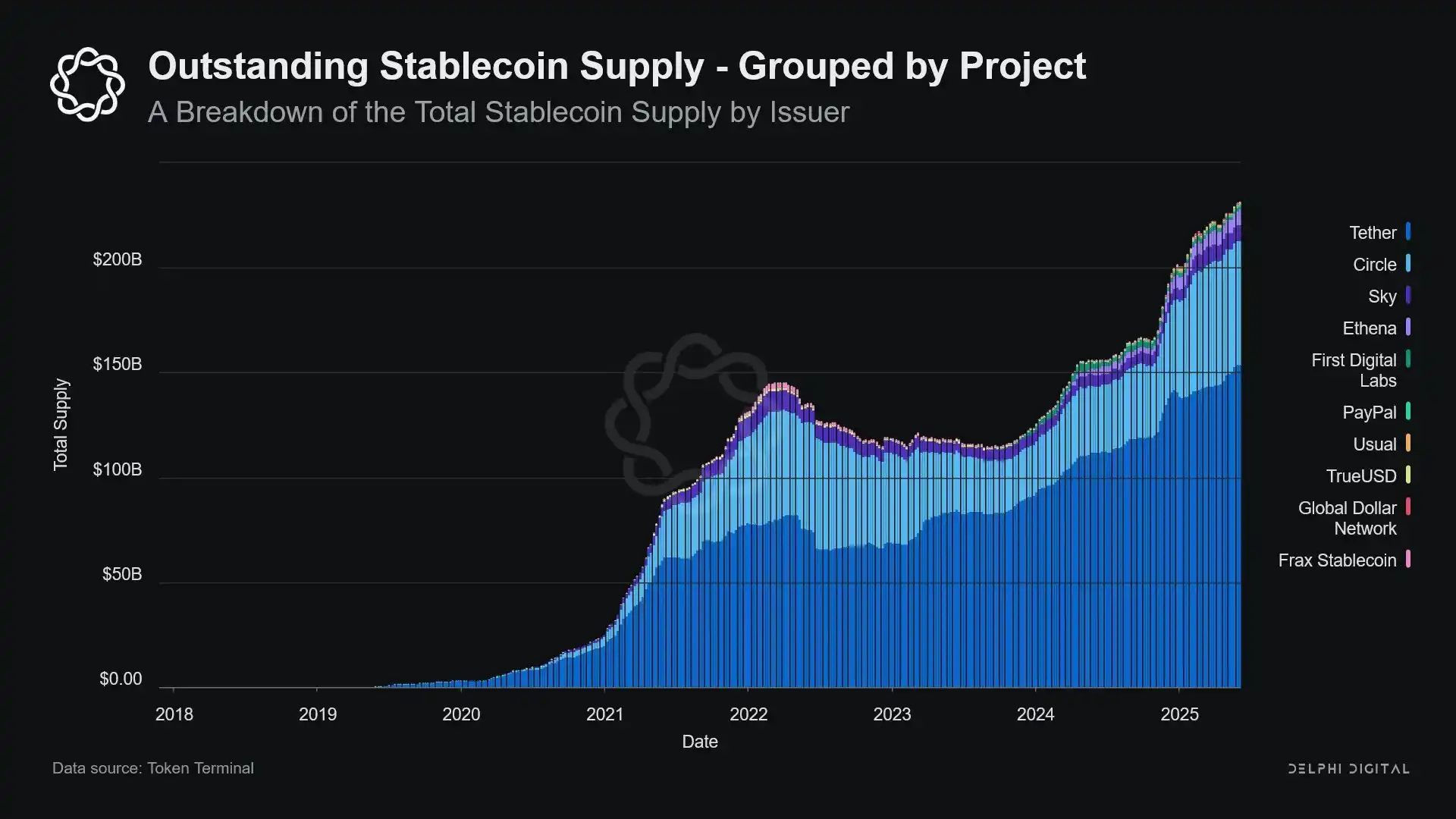
Policy Tension and Systemic Risk
Stablecoins occupy a unique intersection: they are neither banks, nor money market funds, nor traditional payment service providers. This ambiguity of identity creates structural tension for policymakers: too small to be regulated as a systemic risk; too important to be simply banned; too useful yet too dangerous to develop freely without regulation.
A key function of traditional banks is to transmit monetary policy to the real economy. When the Federal Reserve raises interest rates, bank credit tightens, deposit rates adjust, and credit conditions change. However, stablecoin issuers do not lend, so they cannot transmit interest rate changes to the broader credit market. Instead, they absorb high-yield U.S. Treasury securities, do not provide credit or investment products, and many stablecoins do not even pay interest to holders.
The reason the Federal Reserve rejected The Narrow Bank (TNB) from accessing the main account was not due to credit risk concerns, but rather fears of financial disintermediation. The Federal Reserve was worried that if a risk-free bank offered interest-bearing accounts backed by reserves, it would attract a large amount of funds away from commercial banks, potentially undermining the banking system, squeezing credit space, and concentrating monetary power in a "liquidity sterilization vault."
The systemic risks posed by stablecoins are similar—but this time, they do not even need the Federal Reserve's access.
Additionally, financial disintermediation is not the only risk. Even if stablecoins do not provide yields, there remains the "run risk": if market confidence in the quality of reserves or regulatory stance falters, it could trigger a massive wave of redemptions. In such cases, issuers may be forced to sell Treasury securities under market pressure, similar to the 2008 money market fund crisis or the 2022 U.K. LDI crisis.
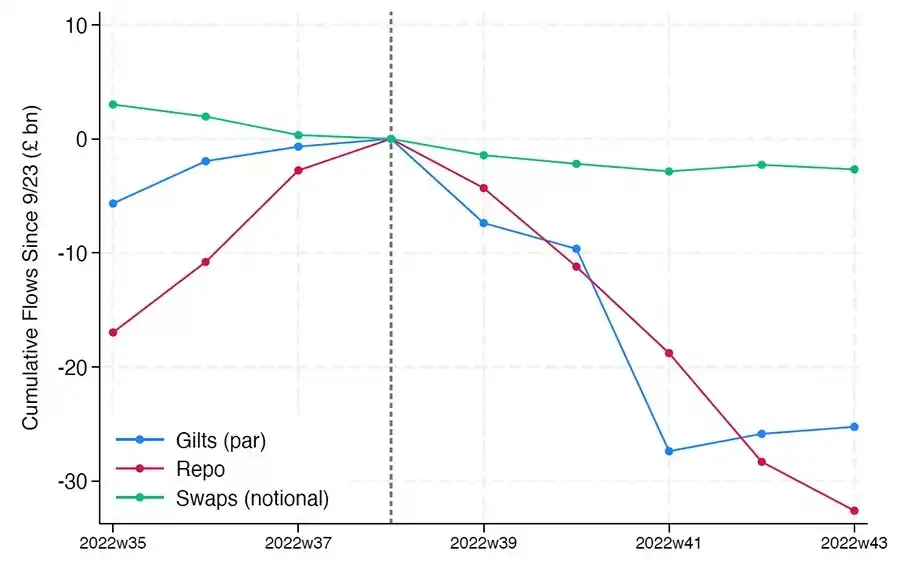
Unlike banks, stablecoin issuers do not have a "lender of last resort." Their shadow banking attributes mean they can quickly grow into a systemic role, but they can also just as rapidly collapse.
However, similar to Bitcoin, there exists a small portion of "seed phrase loss." In the context of stablecoins, this means that some funds will be permanently locked in U.S. Treasury securities, unable to be redeemed, effectively becoming a liquidity blackhole.
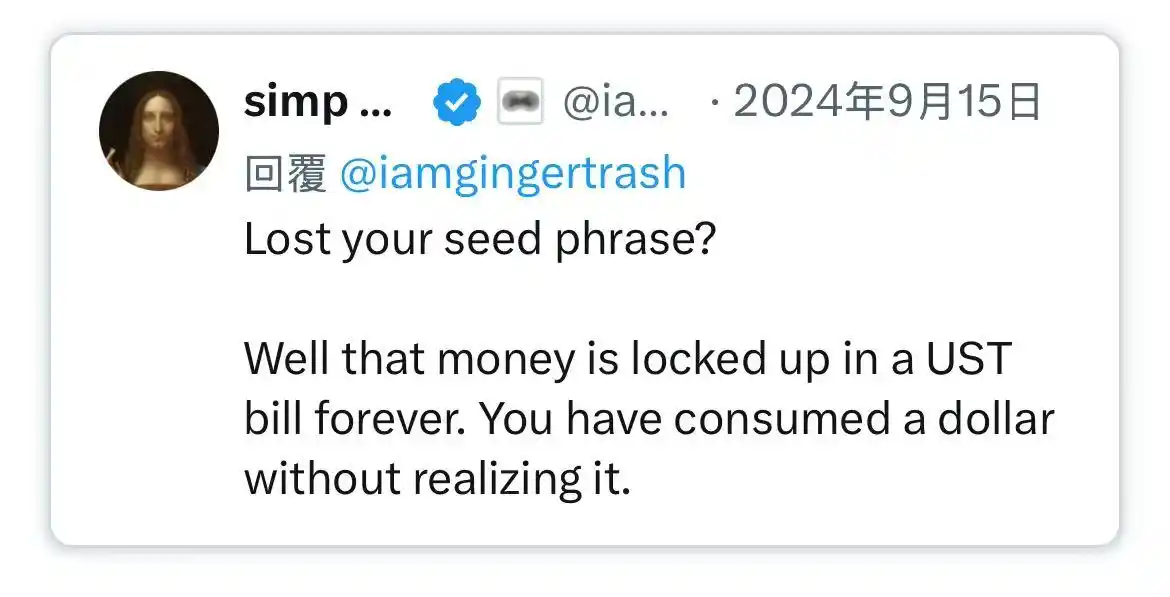
The issuance of stablecoins initially started as a marginal financial product within crypto exchanges, but it has now become a primary channel for dollar liquidity, permeating exchanges, DeFi protocols, and even extending to cross-border remittances and global commercial payments. Stablecoins are no longer marginal infrastructure; they are gradually becoming the underlying framework for dollar transactions outside the banking system.
Their growth is "sterilizing" collateral, locking safe assets into cold storage reserves. This is a form of balance sheet contraction occurring outside the control of central banks—a type of "ambient quantitative tightening" (ambient QT).
And while policymakers and the traditional banking system are still struggling to maintain the old order, stablecoins have quietly begun to reshape it.
免责声明:本文章仅代表作者个人观点,不代表本平台的立场和观点。本文章仅供信息分享,不构成对任何人的任何投资建议。用户与作者之间的任何争议,与本平台无关。如网页中刊载的文章或图片涉及侵权,请提供相关的权利证明和身份证明发送邮件到support@aicoin.com,本平台相关工作人员将会进行核查。

